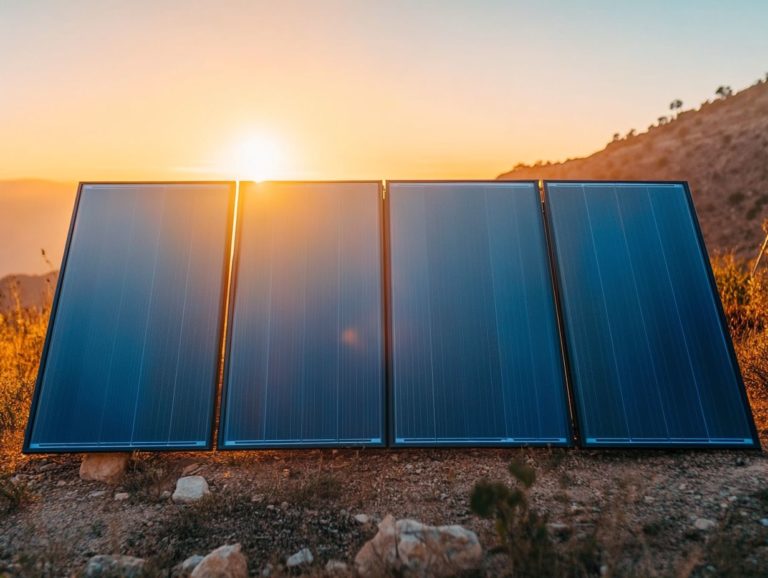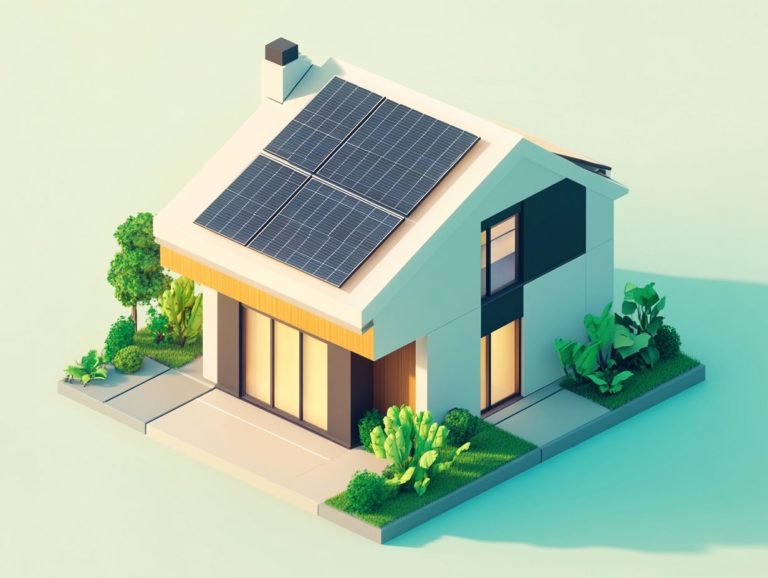What is the Best Insulation for Homes?
Insulation is vital for crafting a comfortable and energy-efficient home. It regulates indoor temperatures, cuts energy costs, and minimizes noise pollution, enhancing your living experience.
With a plethora of insulation materials available, selecting the right one can seem daunting. This article delves into what insulation is and why it matters, compares various types, and guides you in choosing the ideal option for your home.
This article also offers installation tips and highlights the long-term benefits, empowering you to make an informed decision for your living space.
Contents
- Key Takeaways:
- Understanding Insulation for Homes
- Types of Insulation
- Factors to Consider When Choosing Insulation
- Best Insulation Options for Different Areas of the Home
- Installation and Maintenance Tips
- Cost and Energy Savings of Insulation
- Frequently Asked Questions
- What is the Best Insulation for Homes?
- What is the most cost-effective insulation for homes?
- What is the most environmentally-friendly insulation for homes?
- What is the best insulation for homes in cold climates?
- What is the best insulation for homes in hot climates?
- Can I install insulation in my home myself?
Key Takeaways:

- Insulation is crucial for maintaining a comfortable and energy-efficient home.
- The best type of insulation for a home depends on factors like climate, budget, and location within the home.
- Installing it correctly can significantly impact insulation effectiveness and save energy and money in the long run.
Understanding Insulation for Homes
Understanding insulation for your home is essential if you want to enhance thermal efficiency and enjoy significant energy savings. Insulation isn t just a construction material; it s a key player in temperature regulation, minimizing air leakage, and lowering heating bills. These factors contribute to a more comfortable living environment.
In Australia, adhering to building codes like the National Construction Code (NCC) and BASIX will help you choose the best insulation suited to your needs. Explore fantastic options like glass wool, cellulose fiber, and foam insulation, each offering unique benefits that align with sustainable practices.
What is Insulation and Why is it Important?
Insulation is your go-to material for preventing heat transfer, playing a vital role in regulating temperature and enhancing energy savings in your home. By effectively slowing down the flow of heat, insulation helps maintain a comfortable indoor climate, regardless of the weather. This essential function boosts your home’s thermal efficiency and leads to noticeably lower heating bills.
Fiberglass batts are popular for walls and attics because they are cost-effective and easy to install. Conversely, spray foam insulation excels at sealing gaps and irregular spaces, ensuring maximum energy retention. In areas prone to extreme heat, reflective insulation can be particularly beneficial, reflecting radiant heat away from your home and keeping your space cool and energy-efficient throughout the year. For those interested in enhancing their home’s efficiency, exploring 5 effective home insulation techniques can provide valuable insights.
Types of Insulation
You have a wealth of insulation options at your disposal, each providing distinct advantages for specific areas of your home. From bulk insulation to reflective insulation, including specialized materials like glass wool and fiberglass, the right choice can significantly enhance your living space’s comfort and energy efficiency.
Comparing Different Materials
When comparing insulation materials like glass wool, fiberglass insulation, foam insulation, and cellulose, it s crucial to consider their thermal performance, R-values, and environmental impact. These elements significantly influence how effectively each material can maintain comfortable indoor temperatures while reducing energy consumption.
For example, fiberglass insulation is well-known for its excellent thermal performance and cost-effectiveness, making it a favored option among homeowners. On the other hand, foam insulation often excels in tight spaces due to its high R-value and outstanding air sealing capabilities, though professional installation may be required. Meanwhile, cellulose, made from recycled paper, boasts impressive sustainability credentials, but be aware that its performance can be affected by settling over time. For more information on insulating your home: best practices, consider exploring various options to enhance your home’s energy efficiency.
Grasping these pros and cons enables you to make informed choices that align with both your budget and environmental considerations. Choose your insulation wisely to experience the comfort you deserve today!
Factors to Consider When Choosing Insulation
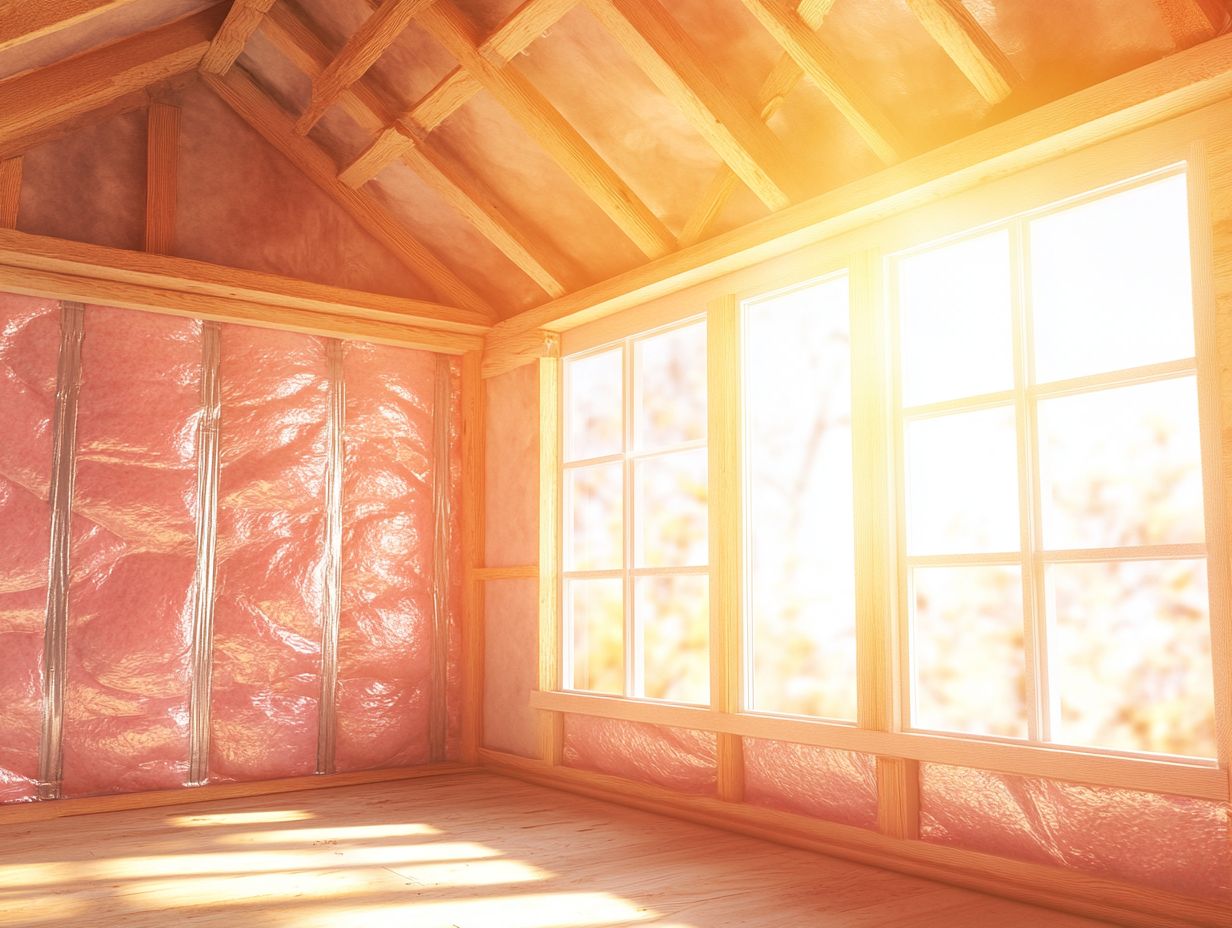
Selecting the ideal insulation requires careful evaluation of key factors: climate, budget, and long-term energy savings. Each of these elements can significantly influence your decision-making process, ensuring you make the most smart choice for your needs.
Climate, Budget, and Other Considerations
When evaluating insulation options, it s crucial to consider your local climate, manage your budget wisely, and think about the potential energy savings.
Each climate zone poses its own challenges that can influence your choice of insulation materials. For example, moisture resistance might be essential in humid areas, while thermal performance takes center stage in colder regions.
If you’re in an area with extreme temperatures, spray foam insulation could be your best bet. It offers impressive R-values, a measure of insulation’s effectiveness. On the other hand, fiberglass batts might work well for more temperate conditions.
Also, factor in the long-term return on investment; the right insulation can substantially reduce your energy bills over time.
Balancing those upfront costs with potential savings on heating and cooling creates a comfortable living space while maximizing energy efficiency.
Best Insulation Options for Different Areas of the Home
Finding the perfect insulation can transform your home. Choosing the right insulation options for areas like the attic, walls, and basement can yield significant enhancements in energy efficiency and overall comfort.
By making smart selections, you can make your living space more inviting and cost-effective.
Attic, Walls, and Basement
Insulation in your attic, walls, and basement is essential for enhancing your home’s energy efficiency and comfort. Each area has its own specific insulation needs tailored to its unique characteristics.
Your attic will thrive with materials like fiberglass batts or spray foam, which excel at retaining heat during colder months, effectively reducing energy loss.
For your walls, dense cellulose or foam boards offer excellent coverage and sound attenuation, helping to regulate indoor temperatures.
In your basement, moisture-resistant insulation, such as rigid foam or closed-cell spray foam, is necessary to tackle dampness and prevent mold growth.
Understanding these nuances guides you toward better insulation choices and ensures that every corner of your home performs at its best.
Installation and Maintenance Tips
Proper installation and maintenance of insulation are essential for maximizing longevity and effectiveness. These steps will help you enjoy the benefits of energy savings and enhanced comfort for many years to come.
Proper Techniques and Longevity of Insulation
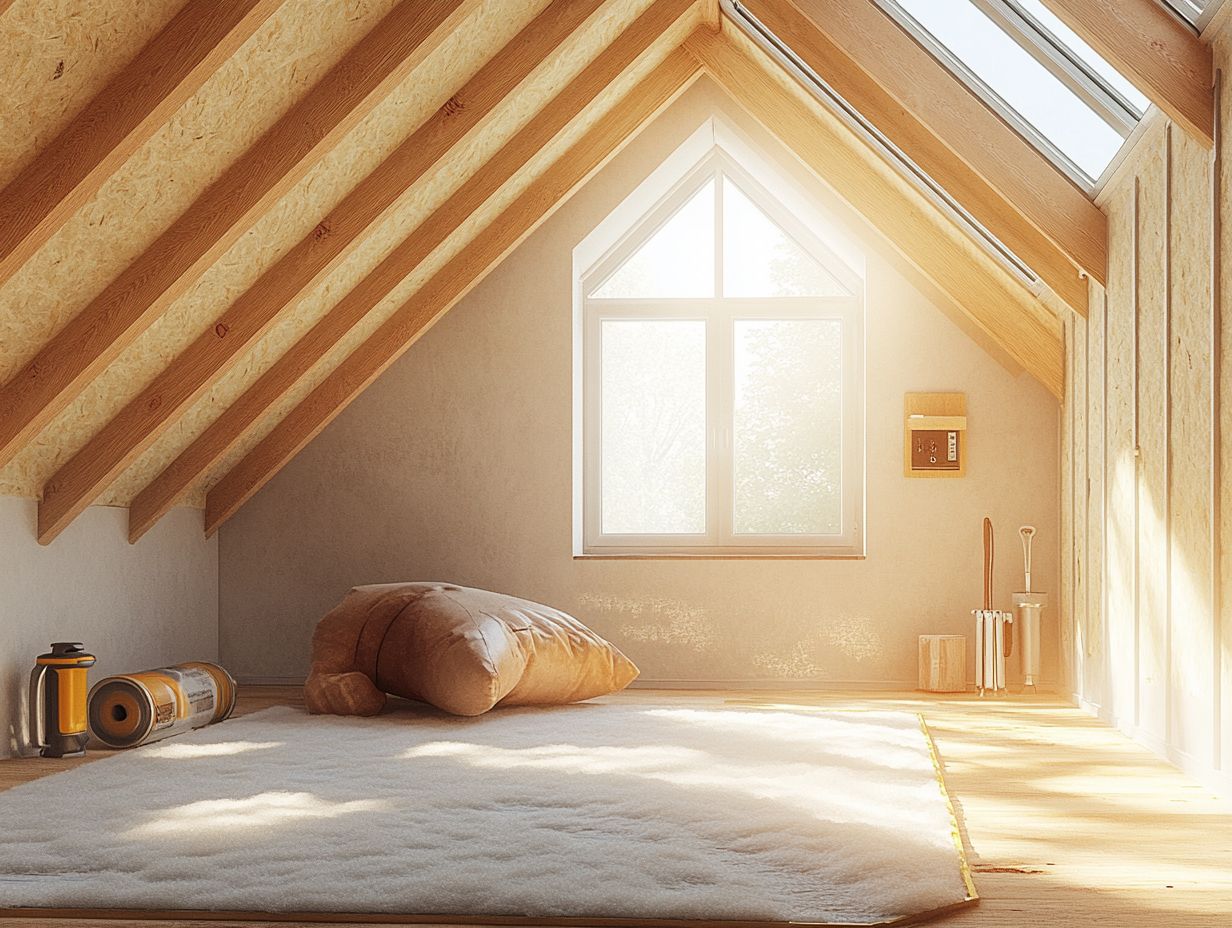
Implementing proper techniques during the insulation installation process significantly enhances its longevity and energy efficiency.
When installing, it s essential to seal any gaps that could allow air leakage, as this can compromise the insulation’s performance.
Utilizing weather stripping or caulking around windows and doors adds an extra layer of protection against unwanted drafts. Ensuring that the insulation material fits snugly against walls and ceilings prevents cold spots from appearing.
Regular maintenance checks, such as inspecting for moisture or mold growth, are crucial for preserving the integrity of the insulation over time. By staying proactive, you can ensure your insulation continues to deliver optimal energy savings and comfort for years to come.
Cost and Energy Savings of Insulation
Understanding insulation costs now can save you big in the future. Grasping the costs tied to insulation and its potential for energy savings is essential for homeowners aiming to make well-informed investments while considering environmentally friendly options.
This knowledge enables you to enhance your home’s efficiency while maximizing your financial returns.
Calculating Return on Investment
Calculate the return on investment (ROI) for insulation. This helps you assess long-term costs and energy savings.
By evaluating various factors, you gain valuable insights into how these enhancements improve home comfort and lower your utility bills.
Start by pinpointing the total installation cost, which includes both materials and labor.
Next, calculate the estimated energy savings, usually resulting from decreased heating and cooling demands over time.
Don t overlook the potential increase in property value from energy-efficient upgrades.
By evaluating these variables, you can make informed decisions about your insulation investments. This ensures you maximize both your financial benefits and your commitment to environmental sustainability.
Frequently Asked Questions
What is the Best Insulation for Homes?
The best insulation for homes depends on factors like climate, budget, and personal preferences. Here are some popular options:
What is the most cost-effective insulation for homes?
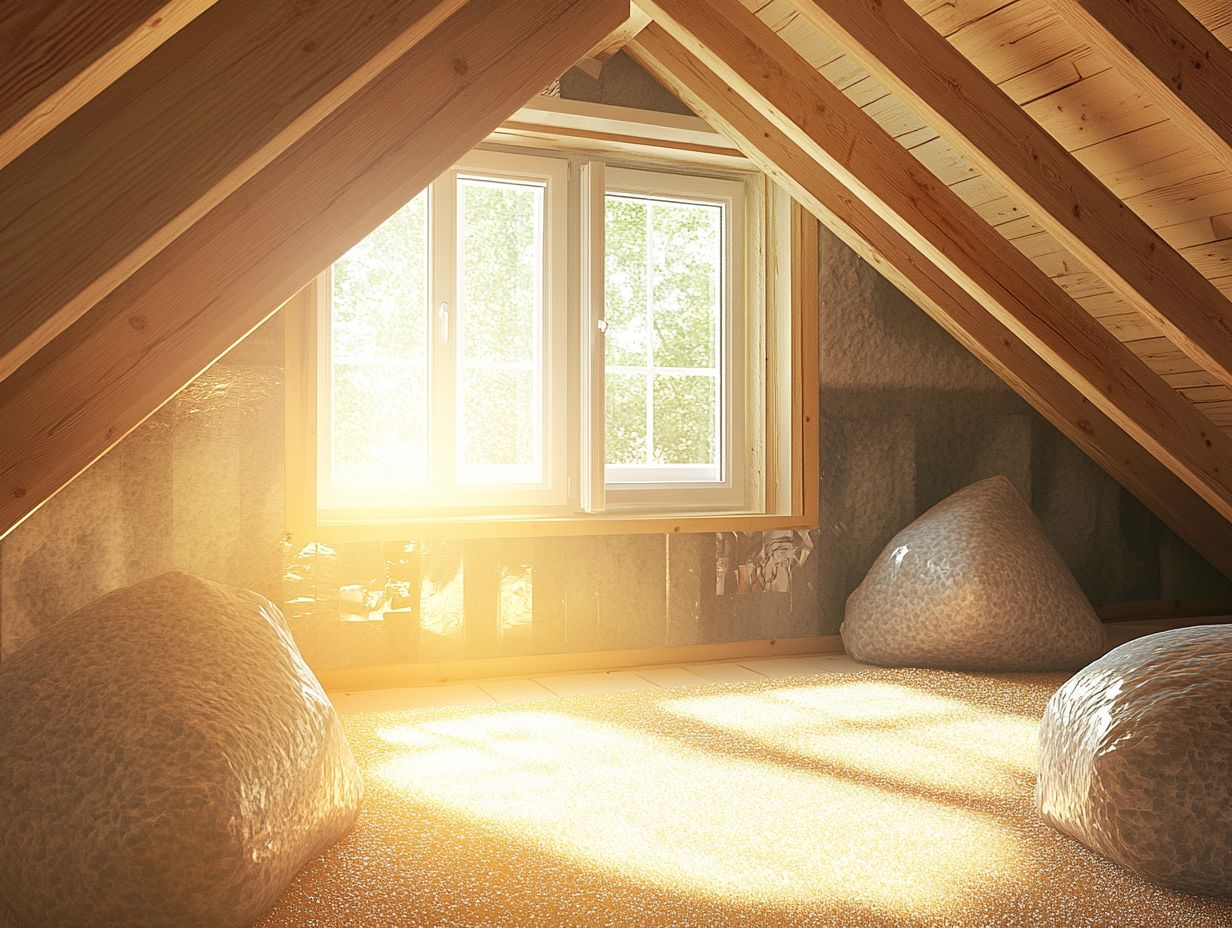
Fiberglass insulation is often the most cost-effective option. It is affordable and easy to install, making it a popular choice among homeowners.
What is the most environmentally-friendly insulation for homes?
Act now and choose cellulose insulation for a greener home! It is made from recycled materials and has a lower carbon footprint compared to other types of insulation.
What is the best insulation for homes in cold climates?
In cold climates, you need insulation with a high R-value to prevent heat loss. Spray foam insulation is a popular choice because it has a high R-value and also seals air leaks.
What is the best insulation for homes in hot climates?
In hot climates, you need insulation that reflects heat. Reflective foil insulation or radiant barrier insulation are commonly used because they can reflect heat away from the home.
Can I install insulation in my home myself?
While it is possible to install insulation yourself, hiring a professional is recommended for proper installation. Improperly installed insulation can lead to drafts, moisture issues, and decreased energy efficiency.





